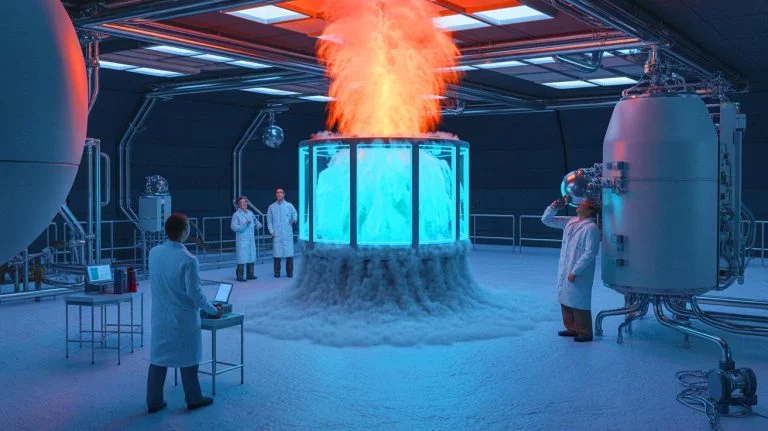| IN A NUTSHELL |
|
In a groundbreaking study, scientists have simulated the harsh conditions of cryovolcanic activity found on icy moons such as Europa and Enceladus. By recreating these environments in the laboratory, researchers aim to better understand how such geological processes could potentially reveal signs of ancient microbial life. This effort is not just about understanding space phenomena but also about guiding future exploratory missions that could one day uncover life beyond Earth.
Understanding Cryovolcanic Processes
Cryovolcanism is a process where water and other volatiles erupt from beneath the surface of icy moons, reshaping them much like lava does on Earth. This type of volcanic activity is significant for planetary scientists, as it could indicate the presence of subsurface oceans that might harbor life. The research team focused on replicating these processes in a controlled environment to gain insight into their dynamics.
The Large Dirty Mars Chamber, affectionately known as ‘George,’ was employed to simulate the low-pressure conditions prevalent on moons like Europa and Enceladus. By observing water behavior under these conditions, the team discovered that water can simultaneously boil and freeze due to the near-zero pressure. This duality is crucial for understanding how the moons’ surfaces are continually reshaped by cryovolcanic activity.
The Role of Effusive Cryovolcanism
Effusive cryovolcanism, akin to lava flows on our planet, involves the gentle release of liquid water onto a moon’s surface. This process has been notoriously difficult to observe directly, prompting scientists to recreate it in the laboratory. The research team’s findings suggest that water, when introduced into their low-pressure chamber, begins to bubble and form vapors, leading to cooling and subsequent freezing.
The resulting ice layer, thin and fragile, is often disrupted by underlying boiling water, allowing liquid to escape through cracks. This phenomenon challenges previous studies that assumed a thick ice crust would prevent further boiling. By understanding these mechanisms, scientists can better predict where to search for signs of life on icy moons.
Potential for Discovering Alien Life
Europa and Enceladus are among the most promising candidates in the quest for extraterrestrial life within our Solar System. Europa’s vast subsurface ocean and Enceladus’ explosive geysers make them prime targets for exploration. The presence of liquid water, a crucial ingredient for life as we know it, raises the possibility of finding microbial organisms.
The new research offers a framework for identifying ancient cryovolcanic activity, which could be a marker for life. By focusing on regions with active or past cryovolcanism, future missions could prioritize these areas, increasing the likelihood of detecting life. This study provides a vital tool for guiding those missions and refining the search parameters for extraterrestrial life.
Implications for Future Space Exploration
The insights gained from simulating cryovolcanic activity have broad implications for our understanding of the Solar System. By knowing where and how cryovolcanism occurs, space agencies can design more targeted missions to icy moons. These missions could employ advanced instruments to analyze the composition of ejected materials and detect biological markers.
Furthermore, the study highlights the importance of interdisciplinary collaboration in space exploration. Combining expertise from geology, atmospheric science, and astrobiology, researchers can develop comprehensive models that enhance our understanding of extraterrestrial environments. This holistic approach is crucial as we stand on the brink of potentially discovering life beyond our planet.
As we continue to explore the mysteries of our Solar System, the question remains: How close are we to finding signs of life on these distant worlds, and what would such a discovery mean for humanity’s place in the universe?
Did you like it? 4.6/5 (24)








So, are we saying that boiling water on Europa might be a hot tub for aliens? 🤔
Wow, this is mind-blowing! Can’t wait to see what they find. 🚀
Isn’t it risky to assume life can only exist in conditions similar to Earth?
Thank you for the fascinating article! Keep up the great work, NASA. 🌌
Is the Large Dirty Mars Chamber really called ‘George’? 😂 That’s hilarious!
Are there any missions planned soon to actually test these findings on Europa or Enceladus?
What if the aliens are just waiting for us to discover them? 👽
So cool! I love reading about space exploration. More articles like this, please!
What’s the next step after these simulations? More lab work or actual space missions?
Is it possible for life to exist in such extreme conditions? Seems unlikely to me.
Can someone explain how water can boil and freeze at the same time? 🤯